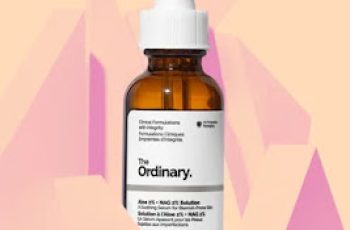
Can You Mix Tretinoin with Azelaic Acid Together?
Tretinoin and azelaic acid both have a reputation for being highly effective ingredients for combating acne and other blemishes. Both can perform exfoliating properties on the outer skin surface, sloughing away the build-up of dead skin cells. They both improve the skin’s texture, clarity, and tackle areas of hyperpigmentation and dark spots.
Each acid can penetrate the pores unclogging them of dirt, bacteria, and excess sebum all this gunk works its way to the surface forming into various blemishes, such as whiteheads, blackheads, and other spots.
The question we are left with is, can you mix tretinoin with azelaic acid? Or would this be a potential recipe for skin disaster? This is exactly what we will be focusing on today, and if you find yourself still wondering what tretinoin and azelaic acid are and how they work on the skin, this next section is for you.
If you are already clued up to the benefits of these powerhouse ingredients, feel free to skip to the next part and dive right in to finding out more.
What is azelaic acid?
Azelaic acid is often mistaken as a member of the AHA and BHA family of chemical exfoliants. It is in fact, its own acid that is naturally occurring in the skin and derived from grains to formulate into skincare products.
Packed with anti-inflammatory and antibacterial properties azelaic acid can help combat swelling and redness whilst killing off any bacteria. You will be left with an all over even skin tone and improved complexion with fine lines and wrinkles visibly reduced.
There is more to know about azelaic acid in our dedicated blog post about its skincare benefits.
What is tretinoin?
We all know or have at least heard of retinol, and tretinoin is the prescribed form of retinoid. Don’t let the change of name fool you, retinol and retinoid belong in the same family of vitamin A that vary in potency. Because of its potent traits, retinoids and tretinoin is favoured by many for combating frequent breakouts and acne, as well as reducing the appearance of ageing, such as fine lines, wrinkles, and loss of elasticity. It is also able to increase the skin cell turnover resulting in the complexion looking brighter, firmer, and more vibrant.
With tretinoin only being available via prescription, this leads to it being highly potent and must be applied to the skin as instructed. I would strongly suggest you do not use tretinoin without the advice or guidance of a medical professional. If you wanted to know more about tretinoin, you can check out our blog post about the powerhouse and how it works on the skin.
How do you mix tretinoin with azelaic acid?
The way to mix tretinoin with azelaic acid comes down to the formulations they are blended in to. Consistency plans an important role in the order you apply your skincare products, by starting with the thinnest consistency and working your way up to the thickest will ensure all active ingredients can deliver results.
If you are new to both ingredients in your routine, you may want to start slowly to avoid any unwanted side effects. Azelaic acid is formulated into various products, start by using a face wash or cleanser to build your skin’s tolerance. Both these products formulas usually contain lower percentages of the acid and have the gentlest impact on the skin due to them being rinsed off the skin. After about 3 weeks you can then move on to using serums, face oils and moisturisers that are enriched in higher percentages.
Tretinoin is highly potent and so using any product containing this ingredient should be carried out correctly. Apply the product as instructed by your doctor and instructions on the packaging. Remembering to only use tretinoin in your evening routine to avoid exposure to UV light as this can render this powerhouse completely useless. To counteract this, ensure you always apply a daily SPF of 30 and above for full protection from sunlight and any long-lasting damage.
Can I use azelaic acid and retinol together?
Yes, you can, although only if used correctly to avoid the skin from becoming irritated. When layering these ingredients together I would suggest you wait for 15 minutes in between applications as this allows the skin pH levels to rebalance.
If this is still causing some concern and perhaps resulting in the skin becoming flushed or itchy, then try applying azelaic acid and retinol during different skincare routines. Apply azelaic acid teamed with a SPF for your morning regime and leave retinol for the evening.
Finally, if for complete peace of mind that you won’t cause any irritation to the skin, you can alternate the day you apply the ingredient. This allows enough time to pass between applications and prevent any flare-ups in discomfort and damage for the skin.
Is azelaic acid better than tretinoin?
When comparing how potent and effective each ingredient is you will find 20% of azelaic acid is equal to 0.05% of tretinoin. This gives you a better idea of how each ingredient works on the skin and how rapidly it delivers results. Having said that, azelaic acid is known for being an overall better ingredient to use due to how it is tolerated by the skin.
What shouldn’t you use with azelaic acid?
It’s recommended to avoid using ingredients such as salicylic acid and other beta hydroxy acids (BHAs) as this can increase skin dryness and irritation very quickly. This will not only feel uncomfortable, but once the skin is stripped of the necessary oils it needs to keep the protective skin barrier strong and capable for warding off damage caused by free radicals.
As for alpha hydroxy acids (AHAs), such as glycolic acid, mandelic, and lactic acid, although azelaic acid is gentler than these popular acids, to avoid skin dryness avoid layering these actives on top of each other.
How long does azelaic acid purging last?
Purging usually lasts about a month to 5 weeks to begin to subside. Purging is often experienced during the initial period of introducing a new active ingredient to your skincare routine. If like azelaic acid, the skin ingredient increases your cell turnover the breakout will last a lot longer, however if you reach 6-8 weeks and have found there to be no improvement stop using your azelaic acid product and seek the advice of your doctor or dermatologist.
There you have some more information about mixing tretinoin with azelaic acid together, I hope I have answered your questions about these ingredients, but if you have any more questions, come, and follow us on Instagram.


